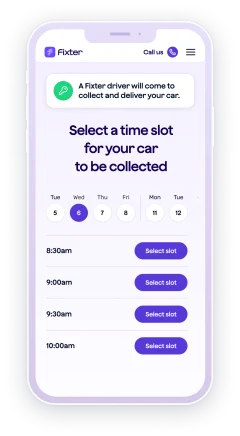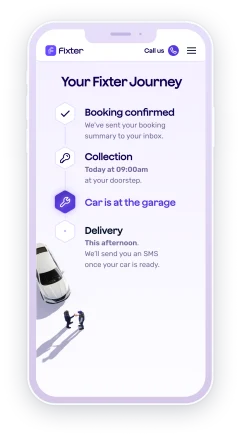Purchasing a second-hand car can be a savvy way to get behind the wheel without breaking the bank, but it's crucial to approach the process with a discerning eye. With a myriad of options available, it's easy to feel overwhelmed, yet a few essential checks can make all the difference in ensuring you drive away with a reliable vehicle. From examining the car's exterior for any signs of damage to scrutinising the service history for regular maintenance, these steps are vital in making an informed decision. In this guide, we will delve into the key aspects to consider when buying a pre-owned vehicle, equipping you with the knowledge to make a confident and informed purchase.
Understanding Your Needs
Determine Your Budget
Before embarking on your quest to buy a second-hand car, it's essential to establish a realistic budget. Start by examining your financial situation to understand what you can comfortably afford. Consider not just the purchase price but also additional costs like insurance, road tax, fuel, and potential maintenance or repairs. It's wise to set both an ideal budget and a maximum limit to prevent overspending. Keep in mind that purchasing a slightly more expensive but well-maintained vehicle might save you money in the long run. Be sure to compare prices of similar models to gauge the market rate and avoid overpaying. Having a clear budget in mind will help narrow down your options, making the selection process more manageable and preventing any financial strain. This financial clarity will be instrumental in making a sensible and informed purchase decision.
Assess Your Must-Have Features
When considering a second-hand car, identifying your essential features is crucial. Start by listing your non-negotiables, such as fuel efficiency, safety features, or the number of seats needed for your family. Think about your daily usage—will you primarily drive in the city or on motorways? This will help determine if you need a compact car or something with more power. Consider lifestyle factors, like whether you require extra boot space for sports equipment or if you need a car suitable for off-road adventures. Features like air conditioning, parking sensors, or an entertainment system might also be important for comfort and convenience. Prioritising these elements will narrow your options and ensure you choose a vehicle that aligns with your lifestyle. This clarity will also aid discussions with sellers or dealers, allowing you to focus on models that truly meet your criteria, leading to a more satisfactory purchase.

Vehicle History and Documentation
Check Service Records
Reviewing the service records of a second-hand car is a pivotal step in the buying process. These records provide insight into how well the vehicle has been maintained over its lifetime. A comprehensive service history indicates regular maintenance, which often translates to better vehicle reliability. Check for consistent servicing intervals and look for any major repairs or replacements. Pay attention to recurring issues that might signal underlying problems. It's also beneficial to verify that the service stamps match the corresponding dates and mileage records. This due diligence can protect you from purchasing a vehicle with potential mechanical issues. Service records can also reveal if the car has undergone any significant modifications, which might affect performance or insurance. By scrutinising these documents, you gain a clearer picture of the car's condition and can make a more informed decision, ensuring peace of mind with your purchase.
Verify Ownership and Mileage
Ensuring the legitimacy of a second-hand car involves verifying both ownership and mileage. Begin by checking the vehicle's logbook, known as the V5C, to confirm the seller's name matches the registered owner. This document also provides the car's make, model, and registration number, which you should cross-reference with the vehicle itself. Discrepancies could indicate potential issues. Next, examine the mileage on the odometer and compare it with records in the service history. Excessive mileage for the car's age might indicate wear and tear, while unusually low mileage could suggest tampering. Additionally, obtaining a vehicle history report can highlight any mileage inconsistencies or past ownership changes. It's crucial to ensure there are no outstanding finance agreements on the vehicle, as this could lead to legal complications. By thoroughly verifying these details, you protect yourself from fraud and ensure a transparent and legitimate purchase.
Ensure Valid MOT Certificate
A valid MOT certificate is crucial when buying a second-hand car, as it confirms the vehicle's roadworthiness. The Ministry of Transport (MOT) test is mandatory for vehicles over three years old in the UK and checks essential safety elements like brakes, lights, and emissions. Before purchasing, verify that the car has a current MOT certificate, and check its expiration date to avoid unexpected costs soon after buying. You can view the MOT history online using the vehicle’s registration number, which provides insights into past test results and any advisories or failures. This information can reveal recurring issues or potential problem areas. Be wary of vehicles with frequent MOT failures, as they might have underlying mechanical issues. Ensuring the car has a valid MOT certificate not only confirms its legality for the road but also offers reassurance about its safety and reliability, contributing to a confident purchase decision.
Inspecting the Car
Examine Exterior and Bodywork
When inspecting a second-hand car, a thorough examination of the exterior and bodywork is essential. Start by walking around the vehicle, looking for dents, scratches, or signs of rust. Pay particular attention to the car’s panels and ensure they align correctly, as misalignment can indicate previous accidents or poor repairs. Inspect the paintwork closely for inconsistencies in colour and texture, which might suggest touch-ups or resprays. Check underneath the vehicle for rust, especially if the car has been driven in areas with harsh weather conditions. Don't forget to examine the condition of the tyres, looking for uneven wear that might suggest alignment or suspension issues. Look at the windscreen and windows for chips or cracks, as these can grow over time and lead to costly repairs. A detailed inspection of the exterior helps you assess potential repair costs and negotiate a fair price, ensuring a wise investment.
Assess Interior Condition
Inspecting the interior condition of a second-hand car is as vital as examining the exterior. Start by checking the upholstery for any tears, stains, or signs of wear. Pay attention to the seats, ensuring they adjust properly and offer adequate support. Examine the dashboard and controls for any damage or malfunctioning features, such as climate control, radio, or navigation systems. Test all the switches and knobs to ensure they operate smoothly. It's also important to check the condition of the seatbelts and ensure they latch and retract correctly. Look for any water stains or musty odours, as these might indicate water leaks or flood damage. Don't forget to examine the floor mats and carpets for excessive wear or dampness. A thorough interior inspection not only ensures comfort but also highlights potential issues that could impact the car’s value and functionality, guiding you towards a sound purchase decision.
Test Drive the Vehicle
A test drive is a crucial step in evaluating a second-hand car, providing firsthand experience of its performance and handling. Begin by adjusting the seat and mirrors for comfort, ensuring visibility and control. As you set off, listen for any unusual noises from the engine, suspension, or brakes. Pay attention to the car’s acceleration and how smoothly it shifts gears, whether manual or automatic. Test the brakes for responsiveness and check if the car pulls to one side, which could indicate alignment or brake issues. Drive on various road surfaces to assess suspension comfort and handling. Additionally, test the steering for precision and ease of manoeuvring. Try parking the car to evaluate turning radius and ease of use. A comprehensive test drive helps identify mechanical issues and ensures the vehicle meets your expectations for comfort and performance, aiding in making an informed purchasing decision.
Under the Bonnet Checks
Inspect Engine and Fluids
Inspecting the engine and fluids of a second-hand car is vital for assessing its mechanical health. Start by checking the engine bay for any visible signs of leaks, corrosion, or damaged hoses and belts. Ensure the engine is cool before opening the reservoir caps to examine fluid levels. Inspect the oil by pulling out the dipstick; the oil should be clean and at an appropriate level. Check the coolant reservoir for proper fluid levels and clarity, as any discolouration might indicate contamination. Verify the brake fluid is at the correct level and appears clear. Examine the power steering and transmission fluids if accessible, noting any burnt smells or unusual colours. Look for a well-maintained air filter, as a dirty filter can affect engine performance. A thorough inspection of the engine and fluids can reveal potential issues, ensuring you avoid costly repairs and make a prudent purchase decision.
Check Suspension and Brakes
Evaluating the suspension and brakes of a second-hand car is crucial for safety and ride comfort. Begin by pushing down on each corner of the vehicle; it should bounce back smoothly without excessive movement, indicating healthy suspension. Listen for any creaks or clunks during your test drive, as these noises can signal worn suspension components. Inspect the shock absorbers for leaks and check the condition of the springs for any signs of wear or damage. For the brakes, visually inspect the brake discs and pads through the wheel spokes. They should have adequate thickness and show no signs of scoring or cracking. During the test drive, ensure the brakes respond quickly and the car doesn't pull to one side. Listen for any grinding or squeaking noises when braking, which may indicate worn brake pads. A thorough check of the suspension and brakes ensures the vehicle is safe and performs well, guiding you towards a reliable purchase.
Negotiating and Finalising Purchase
Understand Pricing Strategy
Understanding the pricing strategy of a second-hand car is essential for effective negotiation. Begin by researching the market value of the car model you are interested in, considering factors such as age, mileage, condition, and any additional features. Online valuation tools and car sales platforms can provide a benchmark price. Be aware of regional price variations and adjust your expectations accordingly. During negotiations, consider any faults or upcoming maintenance needs identified during the inspection and test drive, as these can justify a lower offer. Sellers may have set a slightly higher asking price to allow room for negotiation, so don't hesitate to propose a reasonable counteroffer. Highlight any discrepancies found in the vehicle's history or condition as leverage for a better price. Being informed and prepared gives you confidence, enabling you to negotiate effectively and secure a fair deal, ensuring your purchase aligns with your budget and expectations.
Prepare for Price Negotiation
Effective preparation is key to successful price negotiation when purchasing a second-hand car. Start by gathering comprehensive information about the car's market value, which includes its make, model, age, and condition. This data will serve as a solid foundation for your negotiation stance. Be aware of any factors that can influence the car’s price, such as recent repairs, service history, or any cosmetic or mechanical issues identified during your inspection. Consider setting a target price and a maximum limit that you’re willing to pay. Approach the negotiation with a clear understanding of these figures to avoid overcommitting financially. Practice your negotiation technique, focusing on being polite yet firm. Highlight any deficiencies or pending maintenance as justification for a reduced price. Being prepared with factual information and a clear strategy enhances your bargaining power, allowing you to navigate the negotiation process with confidence and secure a favourable deal.
Completing the Sale Process
Once negotiations are concluded and a price is agreed upon, the next step is completing the sale process. Start by ensuring all necessary paperwork is in order, including the V5C registration document, which should be transferred to your name. Verify that the seller provides you with a receipt that details the transaction, including the agreed price, date, and both parties' signatures. If applicable, ensure any agreed repairs or services are documented and completed before finalising the deal. Check for a valid MOT certificate and service history records to maintain transparency. It's prudent to confirm there are no outstanding finance agreements on the vehicle. Consider arranging insurance coverage before driving the car away to ensure compliance with legal requirements. Finally, make payment through a secure method, such as a bank transfer, avoiding cash transactions for larger sums. Completing these steps carefully ensures a smooth transition of ownership and protects your investment.









